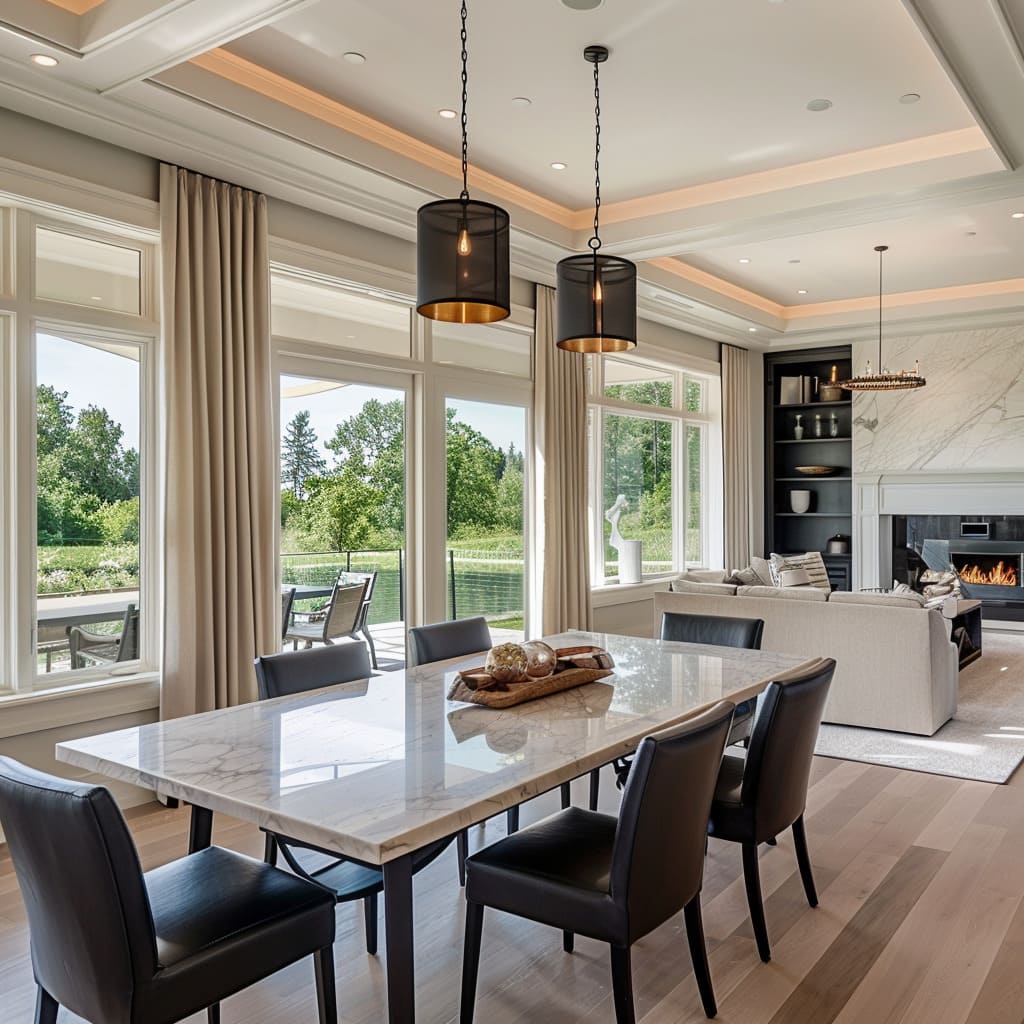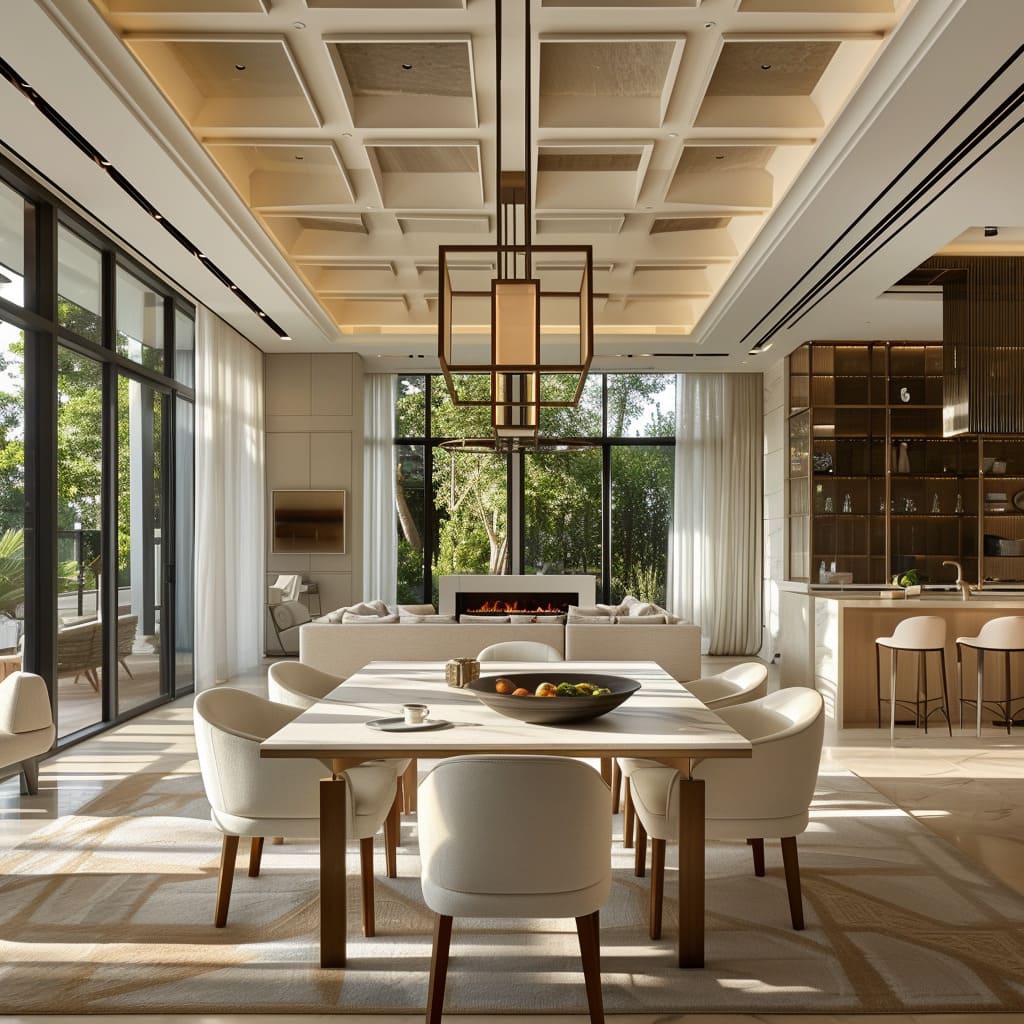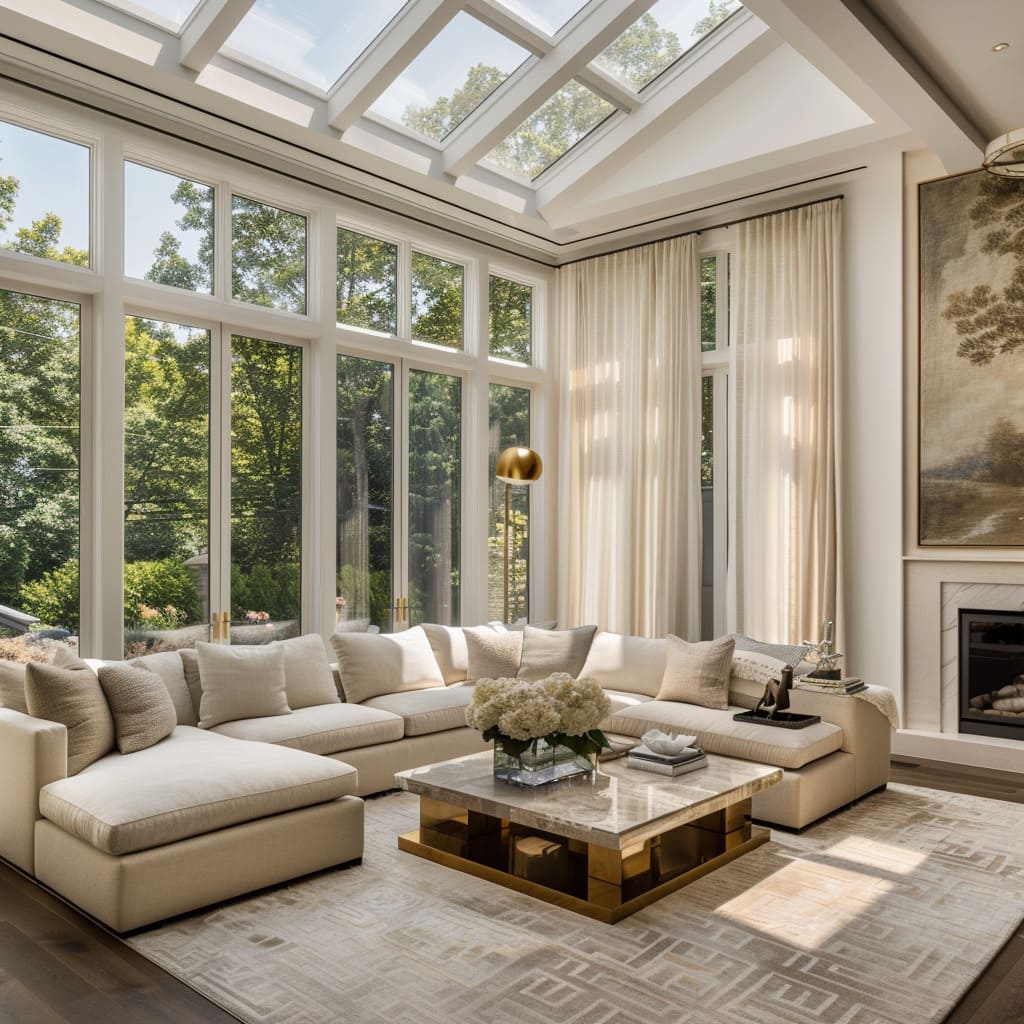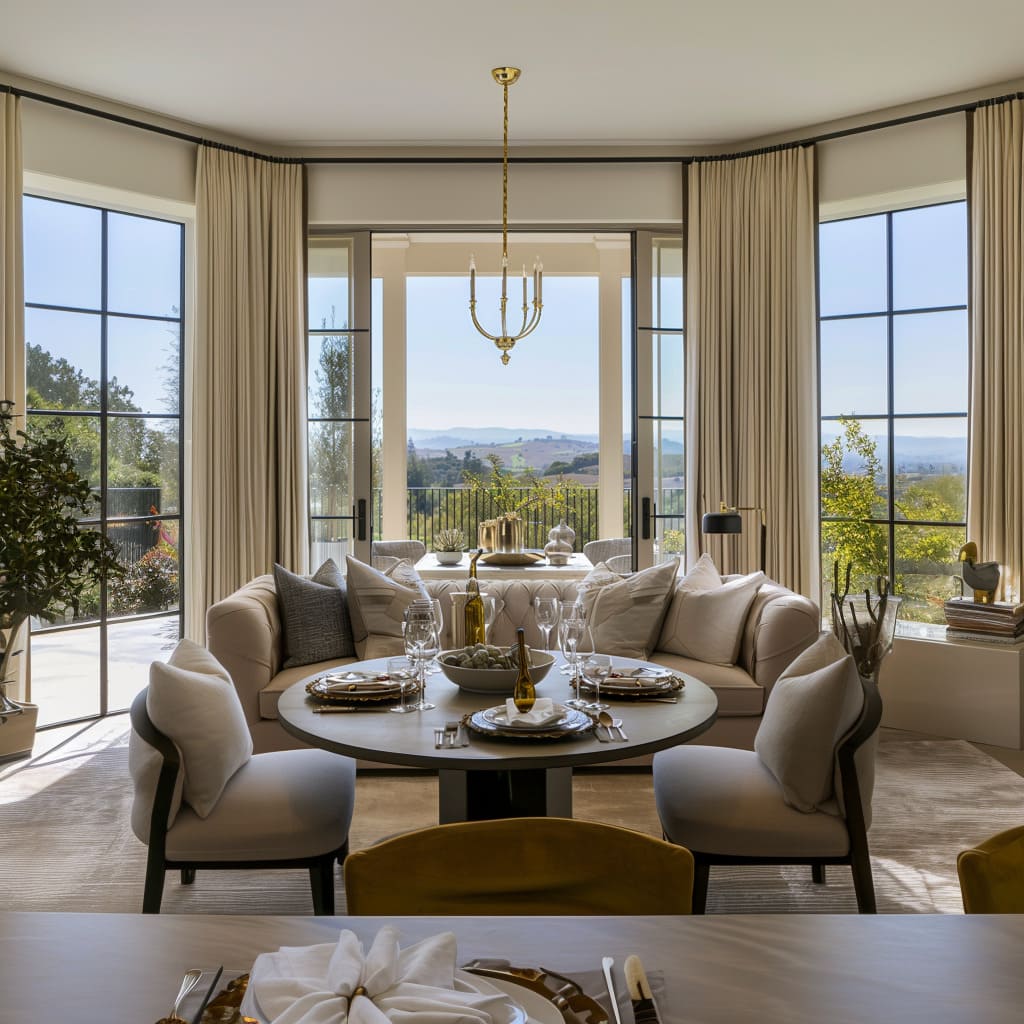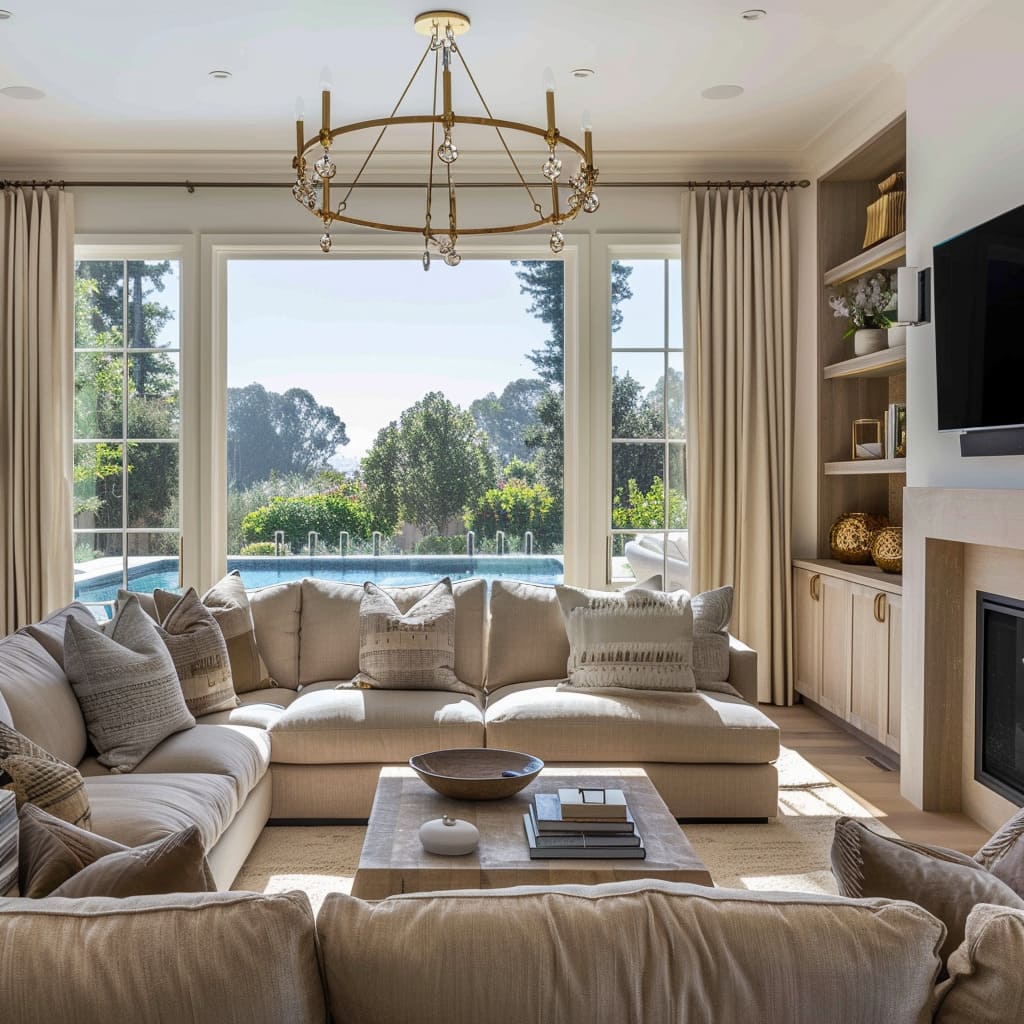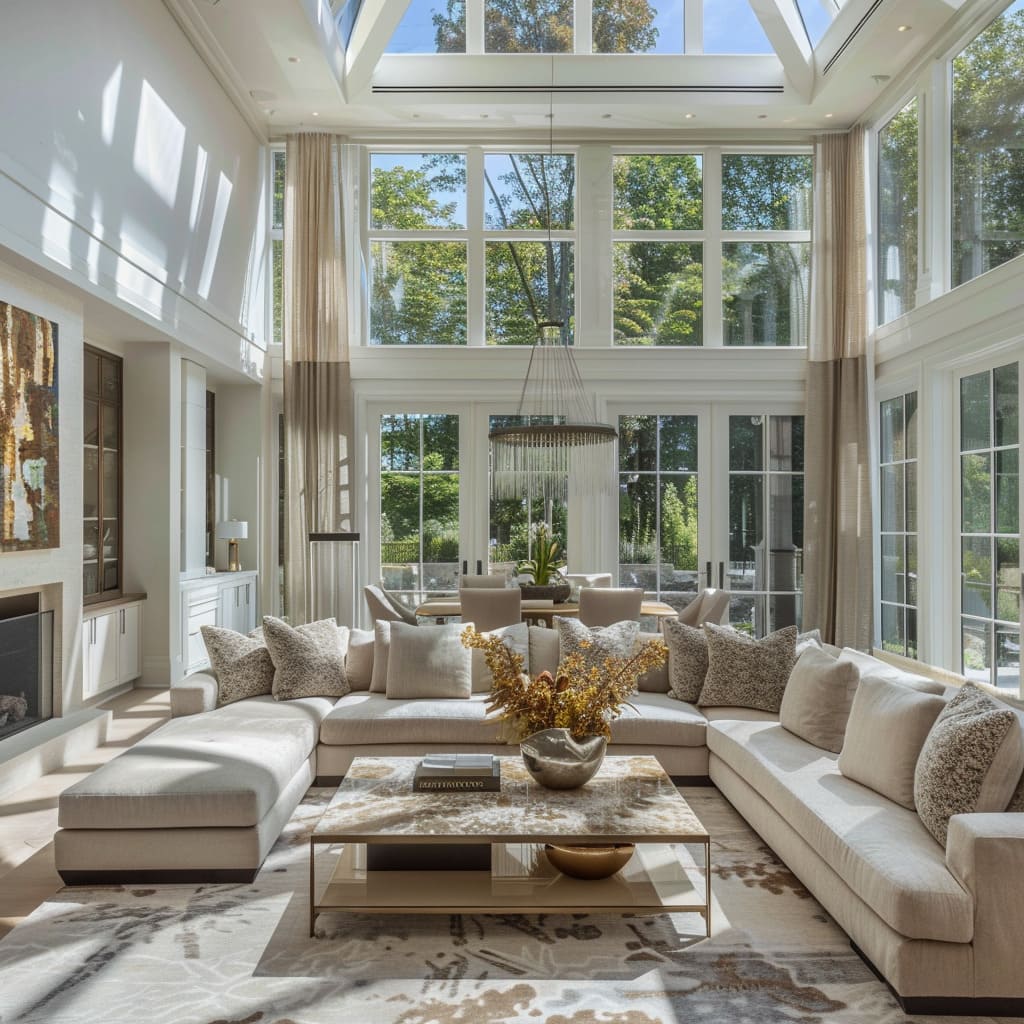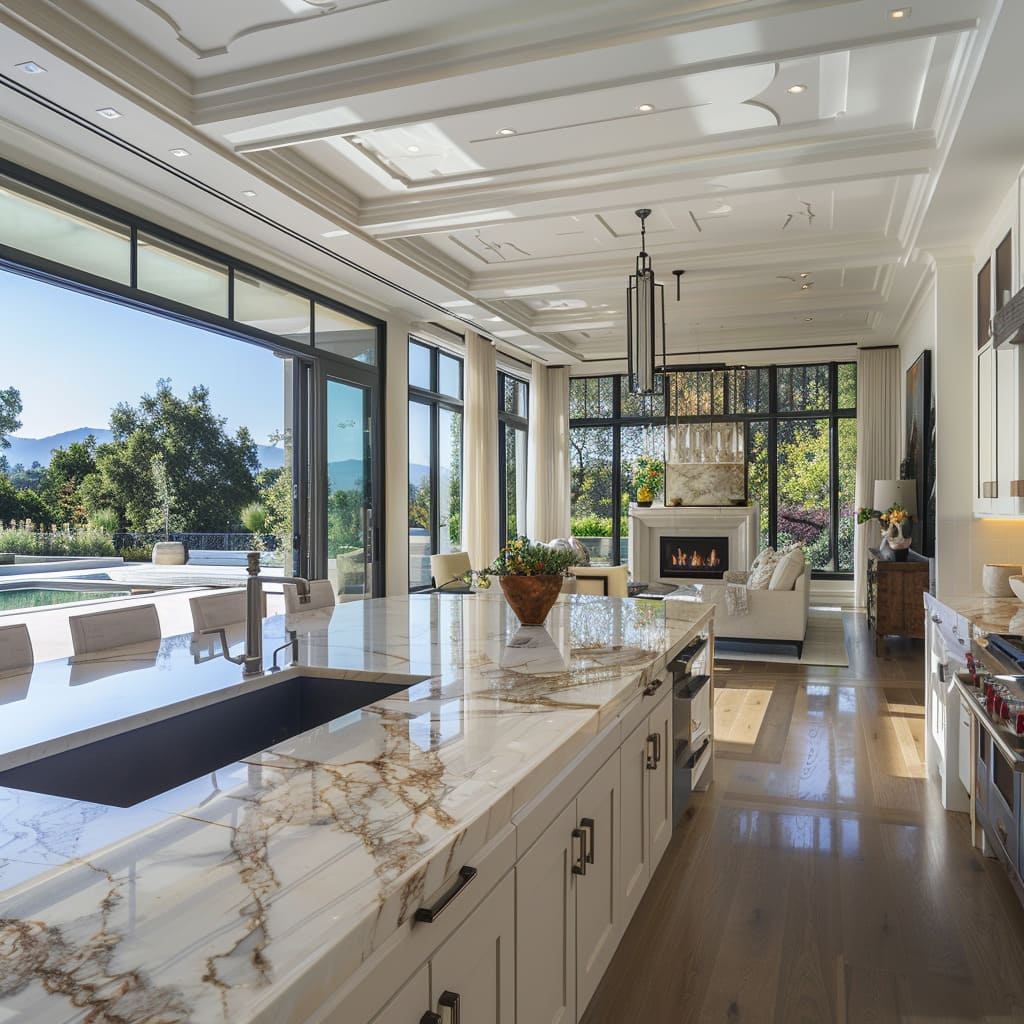There’s something universally appealing about a space that balances the warmth of traditional design with the crisp lines of modern style. This blend, known as transitional design, isn’t just about aesthetics—it’s about creating a home that feels both welcoming and stylishly serene.
Transitional design is a unique approach that blends the comfort and warmth of traditional styles with the clean lines and understated look of contemporary design. This style is characterized by its flexibility, offering a timeless aesthetic that adapts to various living spaces while prioritizing comfort and functional beauty.
Have you ever walked into a room and felt immediately at ease? That’s the goal of transitional design, which achieves this through a balanced aesthetic. It merges the intricate details of traditional styles with the simplicity of modern design to create spaces that feel neither overly ornate nor stark.
This style strikes a balance between the ornate elements of traditional design and the minimalism of modern aesthetics. The result is a relaxed space that feels neither too stuffy nor too sparse.
In transitional interiors, comfort is key. Furniture selections are both stylish and comfortable, often featuring soft, plush materials that invite relaxation.
The use of neutral colors is a hallmark of transitional design. Shades of beige, taupe, and gray dominate, setting a calm, neutral backdrop that is soothing to the eye.
These colors help create a space that feels open and airy.
Textural elements play a crucial role in adding depth and interest. Fabrics like leather and linen, along with natural materials such as wood and stone, are commonly used to bring warmth and life to the design.
Transitional decor is understated, avoiding the clutter of too many decorative items. Instead, a few carefully chosen pieces are used to add character without overwhelming the space.
Furniture often serves dual purposes—it’s both a statement piece and a bastion of comfort. Sofas and chairs with clean lines combined with plush fabrics invite you to relax without sacrificing an ounce of style.
The furniture in transitional interiors often features simple, clean lines mixed with more traditional curves. This creates a look that is both refined and approachable.
Furniture is usually substantial but not overly bulky, providing comfort without sacrificing style.
The arrangement of rooms in a transitional home is geared towards usability and flow. The furniture is arranged to encourage conversation and interaction, making the space welcoming and functional.
Dynamic surfaces such as polished marble or textured wood add visual interest and tactile variety. These materials are chosen for their durability as well as their beauty, contributing to the overall sense of quality in the space.
Lighting in transitional design is more than just functional; it is also a key decorative element. A mixture of modern fixtures and traditional lamps can be used to illuminate the space effectively while also contributing to the decor.
Artwork and personal items are incorporated sparingly but thoughtfully, often serving as the focal points in a room. These elements provide glimpses of personality and help make the space feel lived-in and cozy.
Windows are typically dressed in a way that complements both the simplicity and functionality of the design. Light, flowing drapes or sleek blinds can control light and privacy without detracting from the overall design.
Bringing elements of the outdoors inside is another characteristic of transitional design. This might include potted plants, natural wood furniture, or stone accents that link the interior with the exterior.
Flooring in transitional homes often includes hardwood or stone, providing a durable yet elegant base for the design. Rugs are used to define spaces, add comfort underfoot, and introduce pattern and color.
Metals such as brushed nickel, antique brass, or polished chrome are often used in hardware and fixtures. These elements add a touch of shine and sophistication without overwhelming the space.
Ultimately, transitional design is all about flexibility and adaptability. It allows for personal expression and can evolve over time, accommodating changes in taste or lifestyle without a complete redesign.
Windows are integral to transitional design, as they bring abundant natural light that enhances the airiness of rooms. Properly placed windows can illuminate the entire space naturally, making it appear larger and more welcoming.
Large windows help strengthen the connection between indoor and outdoor environments. They provide scenic views and allow the exterior landscape to become a part of the interior decor, reducing the need for additional adornments.
Choosing the right window treatments is crucial. Light fabrics for curtains or minimalistic blinds can offer privacy without sacrificing light, aligning with the clean aesthetics of transitional design.
Furniture in transitional spaces is arranged to promote interaction. Seating is often positioned to face each other in open layouts that are inviting and conducive to conversation.
In transitional design, decor is kept to a minimum to maintain a clean and uncluttered look. Key decorative pieces are chosen for their quality and ability to complement the overall design.
Each piece of furniture is selected not only for its aesthetic appeal but also for its functionality. This ensures that the space remains livable and practical while still looking elegant.
Furniture and decor are tied together through a cohesive color scheme that mirrors the neutral tones of the walls and floors, with strategic pops of color to add interest without overwhelming the senses. Incorporating different textures through upholstery, throws, and rugs adds depth and interest to the space.
These elements are subtle yet impactful, enhancing comfort without dominating the design.
Art plays a significant role in transitional interiors. It serves as a focal point and adds a personal touch without cluttering the space.
Art pieces are selected to complement the color scheme and theme of the room. Lighting fixtures are not just practical necessities but also key decorative elements.
Sleek, modern lighting can coexist with more traditional lamps to create a layered lighting effect that is both functional and appealing.
Mirrors are strategically placed to reflect light and enhance the sense of space. They are framed in styles that match the transitional theme, bridging modern and traditional elements.
Incorporating elements such as potted plants or natural wood accents can bring life and freshness to transitional spaces, enhancing the blend of indoor and outdoor living. Transitional interiors are designed with flexibility in mind, allowing for easy adjustments in layout to accommodate different activities or changes in family dynamics.
Sustainability is often a consideration in transitional design, with a focus on materials that are both eco-friendly and durable, ensuring the space is both beautiful and responsible. Modern technology is seamlessly integrated into transitional homes, with smart home devices that offer convenience without disrupting the aesthetic harmony of the design.
Fabrics play a significant role in transitional interiors. Materials like velvet and silk not only offer a luxurious feel but are also chosen for their ability to contribute to the overall ambiance of comfort.
These fabrics are perfect for upholstery, curtains, and pillows, where comfort meets style.
The design philosophy in transitional interiors involves a thoughtful approach to color matching. Designers use color to harmonize with the natural light from windows, enhancing the room’s atmosphere and achieving a balanced aesthetic without overwhelming the senses.
Establishing a clear plan and budget at the beginning of a design project is crucial. It helps in minimizing unnecessary expenses and focusing on essential changes that contribute significantly to the transformation of the space.
One of the pillars of budget-friendly transitional design is investing in high-quality, timeless furniture pieces. These selections are viewed as long-term investments that bring durability and enduring style to the home.
Embracing DIY Projects: To further manage costs, homeowners are encouraged to undertake DIY projects. Simple tasks like painting, installing basic fixtures, or minor decorative enhancements can lead to substantial savings.
The strategic use of windows and a focus on streamlined designs are core to creating transitional interiors that balance beauty with functionality. These spaces are designed to be both inviting and comfortable, reflecting a subtle elegance that is practical for everyday living.
By balancing key elements such as light, texture, and color, transitional design creates spaces that are not just visually appealing but also deeply relaxing and functional. The integration of modern and traditional elements ensures that these interiors stand the test of time.
The ultimate goal of transitional design is to create an environment that is both functional and soothing. This is achieved through careful selection of furnishings, thoughtful layout, and a focus on aesthetic subtleties that together create a harmonious living space.
Transitional interiors are characterized by their adaptability, making it easy for the design to evolve with the homeowner’s changing tastes or functional requirements. This flexibility is a key advantage, ensuring the space remains relevant and useful over time.
While transitional design emphasizes a blend of traditional and modern elements, it also leaves room for personal expression. Homeowners are encouraged to integrate their personal style through art, decorative accents, and unique textiles that reflect their personality.
An underlying theme in transitional design is sustainability, not just in materials but also in the design’s ability to endure through trends. Choosing pieces that have a timeless quality ensures the interior design remains relevant and sustainable economically and stylistically.
Modern technology is subtly integrated into transitional designs, enhancing convenience without disrupting the visual harmony. Smart home technologies that manage lighting, climate, and security are seamlessly incorporated, enhancing the living experience.
The design often revolves around maximizing natural light, which is instrumental in making spaces appear larger and more open. This focus on light optimization is crucial for creating an inviting atmosphere.
Layering different materials and textures adds depth and interest to transitional spaces. This strategy involves a mix of various textiles and surface materials that complement each other, enriching the visual and tactile experience.
Keeping the space clutter-free is essential in transitional design. This approach not only contributes to a more aesthetically pleasing environment but also promotes a sense of calm and order, essential for a comfortable home.
Transitional design is more than just a middle ground between old and new. It’s a thoughtful approach to living spaces that evolve with you.
It supports your lifestyle changes and reflects your personal style, all while maintaining a commitment to comfort and sustainability.
















